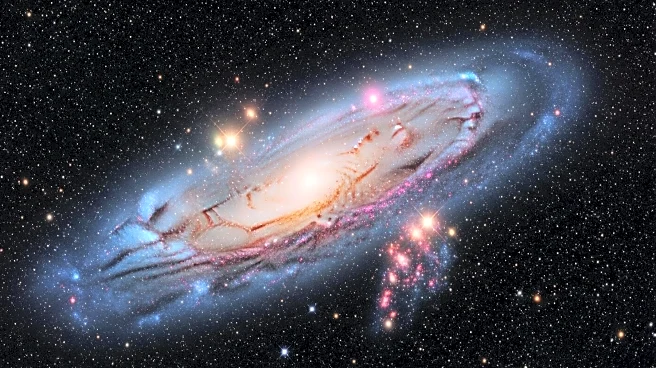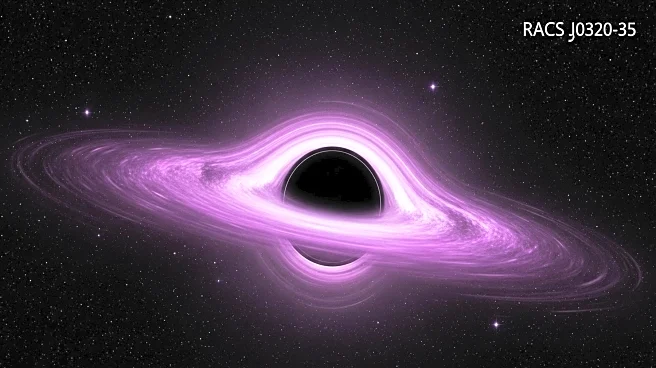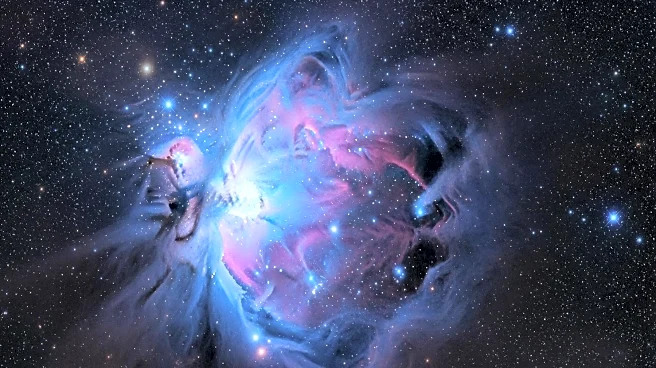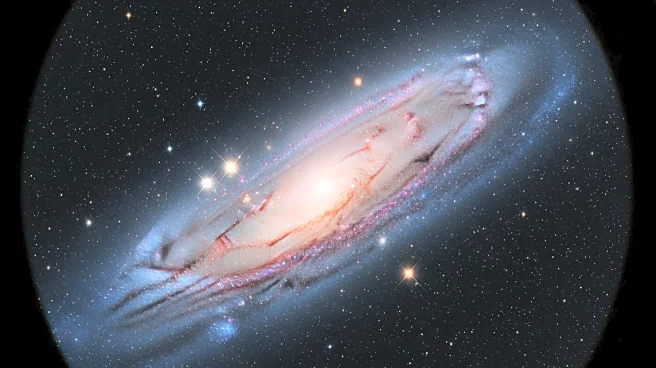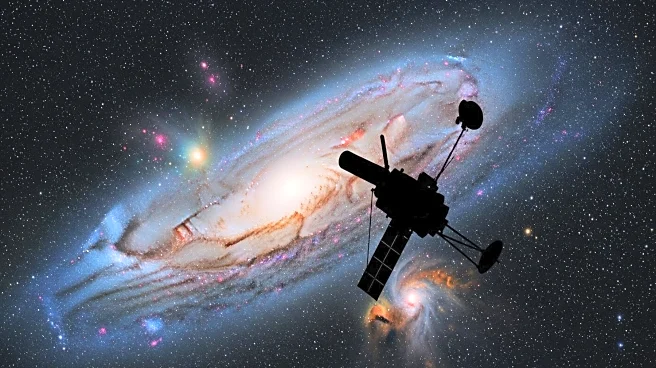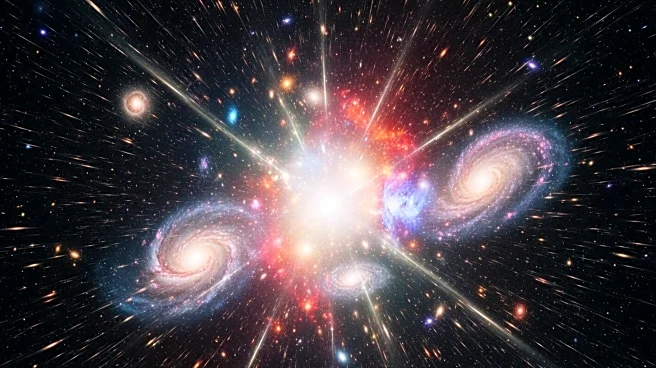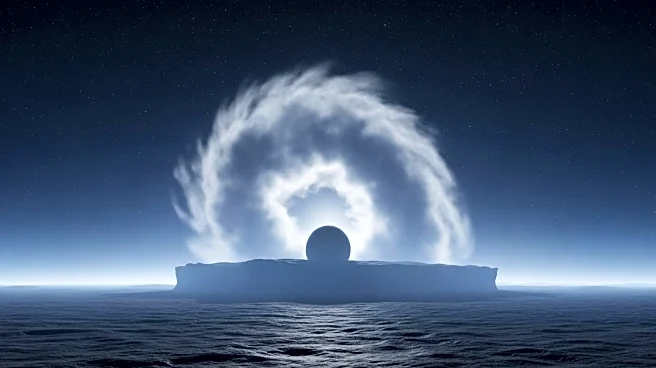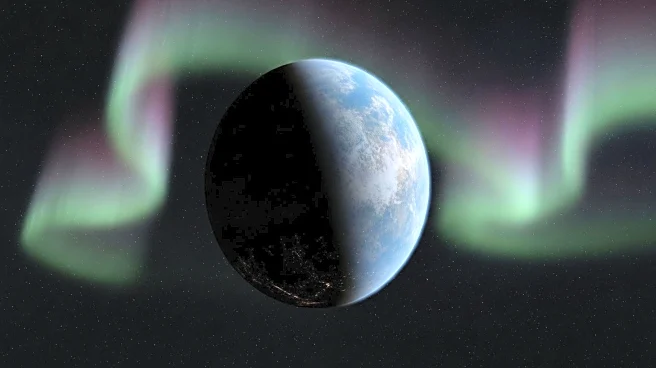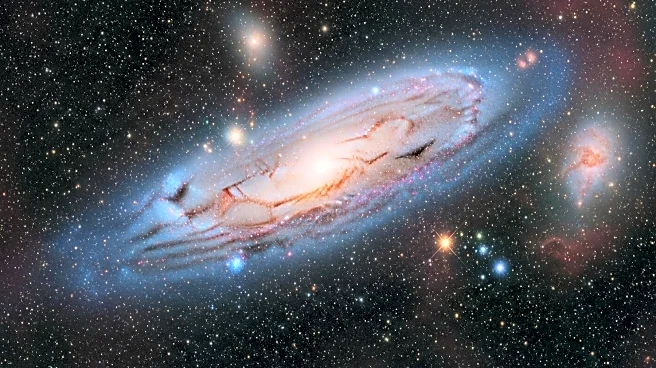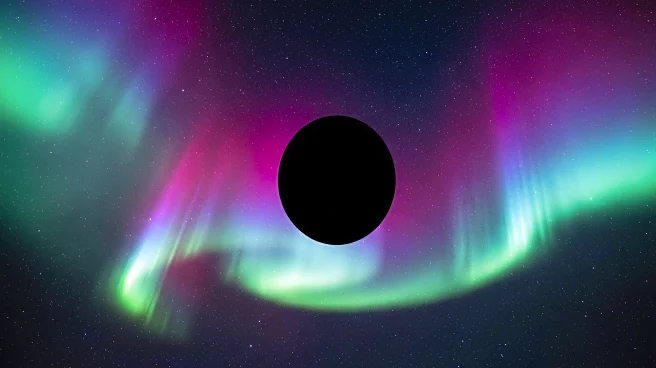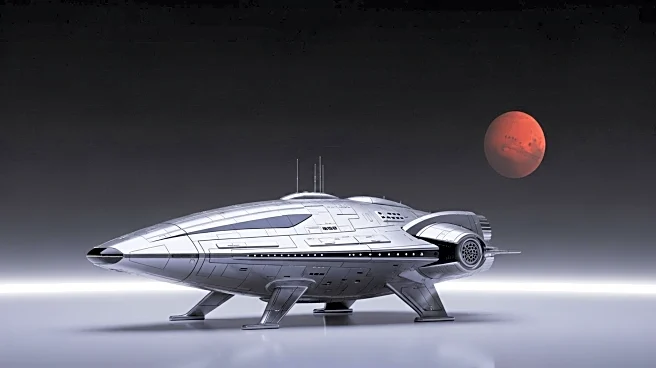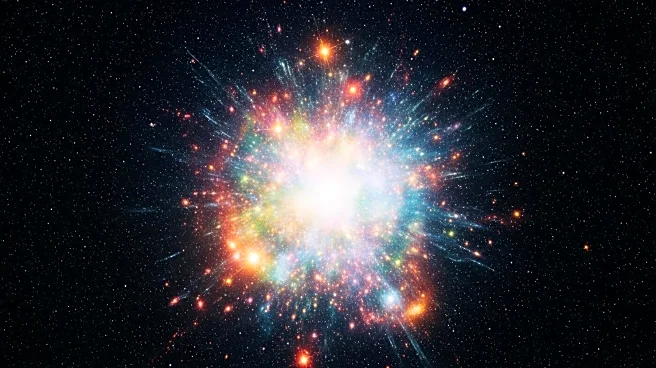What is the story about?
What's Happening?
The NASA/ESA Hubble Space Telescope has captured an image of NGC 2775, a galaxy located 67 million light-years away in the constellation Cancer. This galaxy presents a unique challenge for classification due to its mixed features, resembling both spiral and elliptical galaxies. NGC 2775 has a smooth, gas-free center typical of elliptical galaxies, alongside a dusty ring with star clusters akin to spiral galaxies. Some researchers have classified it as a lenticular galaxy, which shares characteristics with both spiral and elliptical galaxies. Evidence suggests that NGC 2775 may have merged with other galaxies in the past, as indicated by a tail of hydrogen gas stretching nearly 100,000 light-years around it. This tail could be remnants of galaxies absorbed by NGC 2775, explaining its unusual appearance.
Why It's Important?
The discovery of NGC 2775's hybrid nature and its potential history of galactic mergers provides valuable insights into galaxy formation and evolution. Understanding lenticular galaxies, which exhibit features of both spiral and elliptical galaxies, can help astronomers learn more about the processes that lead to such formations. This knowledge is crucial for developing models of galaxy dynamics and interactions, which can impact our understanding of the universe's structure. The study of NGC 2775 also highlights the importance of advanced telescopes like Hubble in uncovering the complexities of distant cosmic phenomena.
What's Next?
Further observations and studies of NGC 2775 could provide more detailed information about its past interactions and the nature of lenticular galaxies. Astronomers may use additional wavelengths and imaging techniques to explore the galaxy's structure and composition. These efforts could lead to a better understanding of how galaxies evolve and interact over time, potentially revealing new aspects of cosmic history.
Beyond the Headlines
The study of NGC 2775 raises questions about the classification of galaxies and the criteria used to define them. As astronomers encounter more hybrid galaxies, the traditional categories of spiral, elliptical, and lenticular may need reevaluation. This could lead to a broader understanding of galaxy types and their formation processes, influencing future astronomical research and education.
AI Generated Content
Do you find this article useful?
